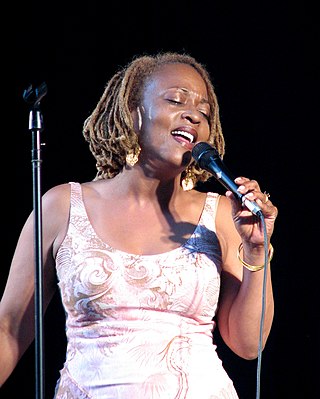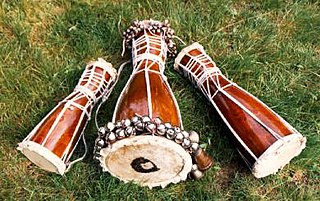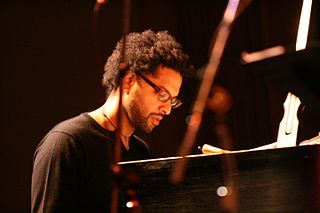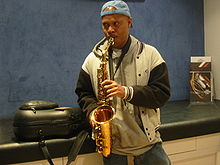The term "M-Base" is used in several ways. In the 1980s, a loose collective of young African American musicians including Steve Coleman, Graham Haynes, Cassandra Wilson, Geri Allen, Robin Eubanks, and Greg Osby emerged in Brooklyn with a new sound and specific ideas about creative expression. Using a term coined by Steve Coleman, they called these ideas "M-Base-concept" and critics have used this term to categorize this scene's music as a jazz style. But Coleman stressed "M-Base" doesn't denote a musical style but a way of thinking about creating music. As famous musicians did in the past, he also refuses the word "jazz" as a label for his music and the music tradition represented by musicians like John Coltrane, Charlie Parker, Louis Armstrong, etc. However, the musicians of the M-Base movement, which also included dancers and poets, strived for common creative musical languages, so their early recordings show many similarities reflecting their common ideas, the experiences of working together, and their similar cultural background. To label this kind of music, jazz critics have established the word "M-Base" as a jazz style for lack of a better term, distorting its original meaning.

Cassandra Wilson is an American jazz singer, songwriter, and producer from Jackson, Mississippi. She is one of the most successful female Jazz singers and has been described by critic Gary Giddins as "a singer blessed with an unmistakable timbre and attack [who has] expanded the playing field" by incorporating blues, country, and folk music into her work. She has won numerous awards, including two Grammys, and was named "America's Best Singer" by Time magazine in 2001.

Ravi Coltrane is an American jazz saxophonist. Co-owner of the record label RKM Music, he has produced pianist Luis Perdomo, guitarist David Gilmore, and trumpeter Ralph Alessi.
Michael Cain is a pianist and composer.

Bob Stewart is an American jazz tuba player and music teacher.

The Batá drum is a double-headed drum shaped like an hourglass with one end larger than the other. The percussion instrument is still used for its original purpose as it is one of the most important drums in the yoruba land and used for traditional and religious activities among the Yoruba. Batá drums have been used in the religion known as Santería in Cuba since the 1800s, and in Puerto Rico and the United States since the 1950s. Today, they are also used for semi-religious musical entertainment in Nigeria and in secular, popular music. The early function of the batá was as a drum of different gods, of royalty, of ancestors and a drum of politicians, impacting all spheres of life in Yoruba land.

David Gilmore is an American jazz guitarist.

Lonnie Plaxico is an American jazz double bassist.

Francisco Aguabella was an Afro-Cuban percussionist whose career spanned folk, jazz, and dance bands. He was a prolific session musician and recorded seven albums as a leader.
Marvin "Smitty" Smith is an American jazz drummer and composer.

Amina Claudine Myers is an American jazz pianist, organist, vocalist, composer, and arranger.
Rumba is a secular genre of Cuban music involving dance, percussion, and song. It originated in the northern regions of Cuba, mainly in urban Havana and Matanzas, during the late 19th century. It is based on African music and dance traditions, namely Abakuá and yuka, as well as the Spanish-based coros de clave. According to Argeliers León, rumba is one of the major "genre complexes" of Cuban music, and the term rumba complex is now commonly used by musicologists. This complex encompasses the three traditional forms of rumba, as well as their contemporary derivatives and other minor styles.

Ralph Alessi is an American jazz trumpeter, composer, and ECM recording artist. Alessi is known as a virtuosic performer whose critically-acclaimed projects include his Baida Quartet, with Jason Moran, Drew Gress, and Nasheet Waits, and This Against That, his quintet with Andy Milne, Gress, Mark Ferber, and Ravi Coltrane. Alessi has also recorded and performed with artists including Steve Coleman, Uri Caine, Fred Hersch, and Don Byron.

Andy Milne is a Canadian jazz pianist, who records and performs both as a solo artist and as the leader of the ensemble Dapp Theory. He was born in Hamilton, Ontario, and raised in Kincardine and Toronto. One of ten siblings, he studied music at York University, where he was a student of Oscar Peterson.
Novus Records was an American jazz record label run by Steve Backer. Backer worked at Impulse! Records until 1974, when Clive Davis, founder of Arista Records, asked him to oversee the jazz division at Arista.
Kenny Davis is an American jazz bassist.

Sean Rickman is an American musician from Washington, D.C. He has worked with Shawn Lane, Garaj Mahal, Dapp Theory, Steve Coleman, Maxwell, Meshell Ndegeocello, Blacksheep, Phil Upchurch, David Fiucynski and Screaming Headless Torsos, Kai Eckhardt, Anthony Tidd's Quite Sane, K'Alyn, Angela Bofill and George Duke. Rickman was lead singer and drummer for Garaj Mahal from 2007–2011 and his rock band Big Mouth featuring guitarist Leonard Stevens. He was also featured alongside Herbie Hancock, Wayne Shorter and Marcus Miller on the Tribute to Miles 2011 tour.

Dafnis Prieto is a Cuban-American drummer, composer, bandleader, and educator.
This is the discography of American jazz musician Paul Motian.
Coros de clave were popular choral groups that emerged at the end of the 19th century in Havana and other Cuban cities. Their style was influenced by the orfeones which grew popular in northern Spain in the mid-19th century, and their popularization in the island was linked to the emancipation of African slaves in 1886. The common instrumentation of the coros featured a viola, claves, guitar, harp and jug bass.












